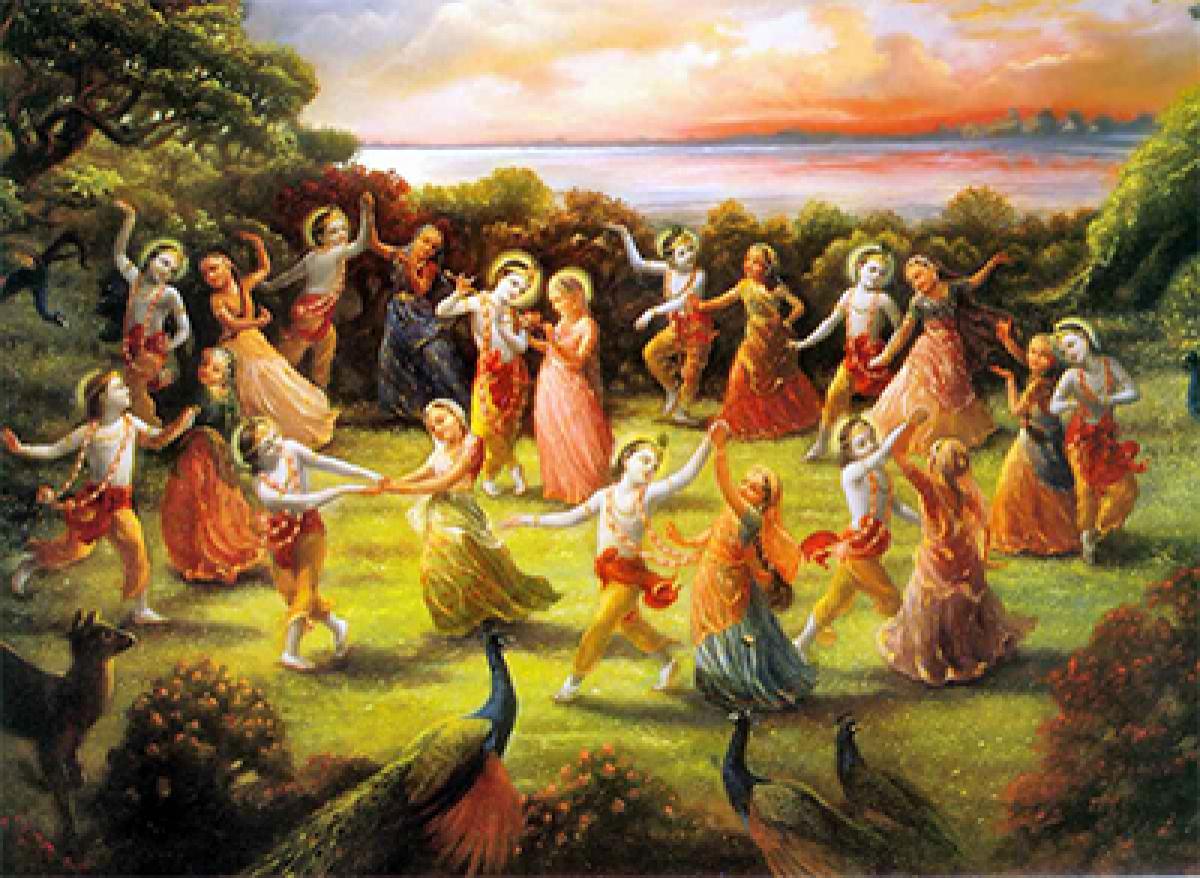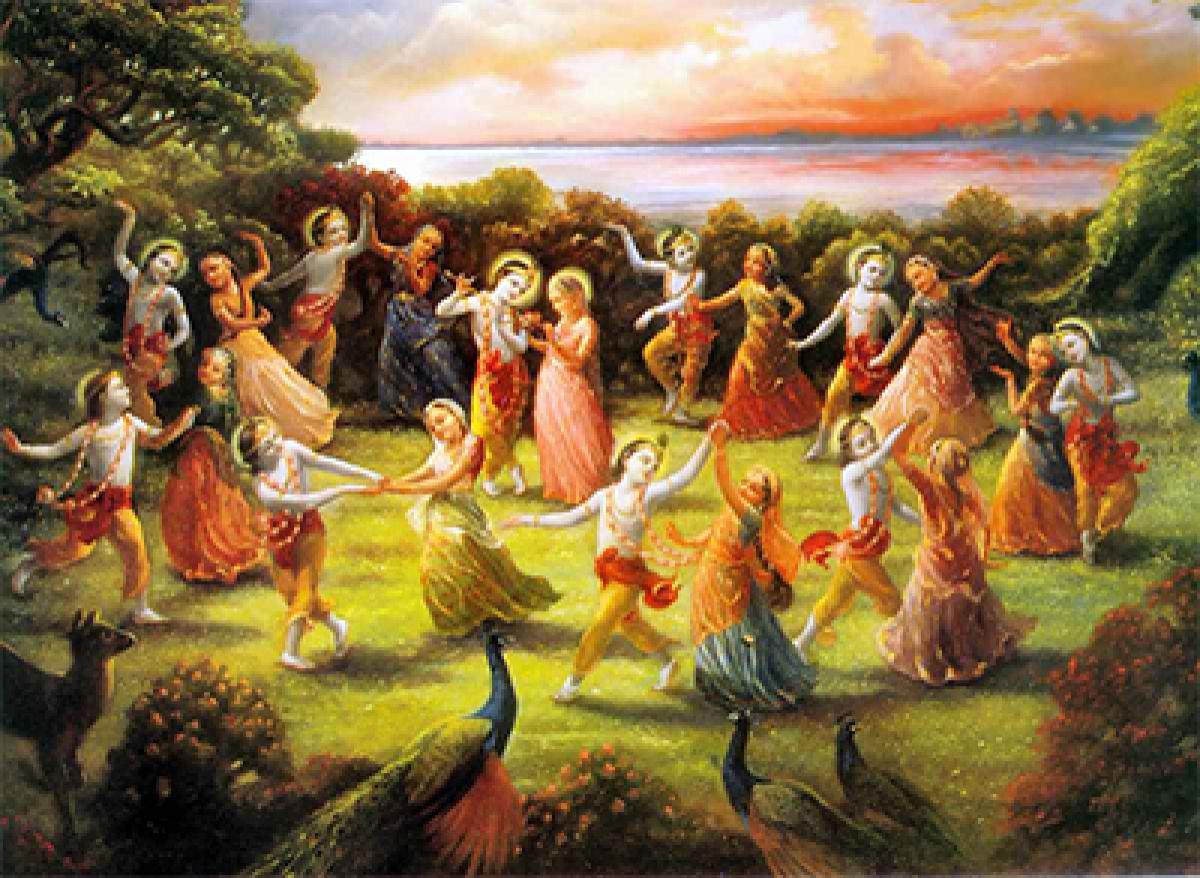Live
- Casual approach: SC; summons govt official
- SC to hear pleas challenging Places of Worship Act today
- GMR Airports Unveils AI-Powered Digital Twin Platform to Transform Airport Operations
- India poised to become leading maritime player: PM Modi
- Top Causes of Kidney Stones and How to Recognize Silent Symptoms
- India’s renewable energy capacity logs 14.2 pc growth at 213.7 GW
- Winter Session of Odisha Assembly adjourned sine die
- Biden calls Trump's tariff approach 'major mistake'
- After Drama Over Eknath Shinde’s Chief Minister Race, Maharashtra Cabinet Formation Faces New Tensions
- Egyptian FM, Blinken discuss recent developments in Syria
Just In

The Sufi movement made a valuable contribution to Indian society. Like the Bhakti saints who were engaged in breaking down the barriers within Hinduism, the Sufis too infused a new liberal outlook within Islam. The interaction between early Bhakti and Sufi ideas laid the foundation for more liberal movements of the fifteenth century.
 The Sufi movement made a valuable contribution to Indian society. Like the Bhakti saints who were engaged in breaking down the barriers within Hinduism, the Sufis too infused a new liberal outlook within Islam. The interaction between early Bhakti and Sufi ideas laid the foundation for more liberal movements of the fifteenth century.
The Sufi movement made a valuable contribution to Indian society. Like the Bhakti saints who were engaged in breaking down the barriers within Hinduism, the Sufis too infused a new liberal outlook within Islam. The interaction between early Bhakti and Sufi ideas laid the foundation for more liberal movements of the fifteenth century.
Sant Kabir and Guru Nanak had preached a non-sectarian religion based on universal love. The Sufis believed in the concept of Wahdat-ul-Wajud (Unity of Being) which was promoted by Ibn-i-Arabi (l165-1240). He opined that all beings are essentially one. Different religïons were identical. This doctrine gained popularity in India.
There was also much exchange of ideas between the Sufis and Indian yogis. In fact the hatha-yoga treatise Amrita Kunda was translated into Arabic and Persian. A notable contribution of the Sufis was their service to the poorer and downtrodden sections of society. While the Sultan and ulema often remained aloof from the day to day problems of the people, the Sufi saints maintained close contact with the common people.
Nizamuddin Auliya was famous for distributing gifts amongst the needy irrespective of religion or caste. It is said that he did not rest till he had heard every visitor at the khanqah. According to the Sufis, the highest form of devotion to God was the service of mankind. They treated Hindus and Muslims alike. Amir Khusrau said “Though the Hindu is not like me in religion, he believes in the same things that I do”.
The Sufi movement encouraged equality and brotherhood. It fact, The Islamic emphasis upon equality was respected far more by the Sufis than by the ulema. The doctrines of the Sufis were attacked by the orthodoxy. The Sufis also denounced the ulema. They believed that the ulema had succumbed to world by temptations and were moving away from the original democratic and egalitarian principles of the Quran.
This battle between the orthodox and liberal elements continued throughout the sixteenth, seventeenth and eighteenth centuries. The Sufi saints tried to bring about social reforms too. Like the Bhakti saints, the Sufi saints contributed greatly to the growth of a rich regional literature. Most of the Sufi saints were poets who chose to write in local languages.
Baba Farid recommended the use of Punjabi for religious writings. Shaikh Hamiduddin, before him, wrote in Hindawi. His verses are the best examples of early Hindawi translation of Persian mystical poetry. Syed Gesu Daraz was the first writer of Deccani Hindi. He found Hindi more expressive than Persian to explain mysticism. A number of Sufi works were also written in Bengali.
The most notable writer of this period was Amir Khusrau (l 252-1325) the follower of Nizamuddin Auliya. Khusrau took pride in being an Indian and looked at the history and culture of Hindustan as a part of his own tradition. He wrote verses in Hindi (Hindawi) and employed the Persian metre in Hindi. He created a new style called sabaq-i-hindi. By the fifteenth century Hindi had begun to assume a definite shape and Bhakti saints such as Kabir used it extensively.
Bhakti movement
You will recall that the Bhakti movement was a socio-religious movement that opposed religious bigotry and social rigidities. It emphasised good character and pure thinking. At a time when society had become stagnant, the Bhakti saints infused new life and strength.
They awakened a new sense of confidence and attempted to redefine social and religious values. Saints like Kabir and Nanak stressed upon the reordering of society along egalitarian lines. Their call to social equality attracted many a downtrodden. Although Kabir and Nanak had no intention of founding new religions but following their deaths, their supporters grouped together as Kabir panthis and Sikhs respectively.
The importance of the Bhakti and Sufi saints lies in the new atmosphere created by them, which continued to affect the social, religious and political life of India even in later centuries. Akbar’s liberal ideas were a product of this atmosphere in which he was born and brought up. The preaching of Guru Nanak were passed down from generation to generation.
This resulted in the growth of a separate religious group, with its separate language and script Gurmukhi and religious book, Guru Granth Sahib. Under Maharaja Ranjit Singh, the Sikhs grew into a formidable political force in the politics of North India.The interaction between the Bhakti and Sufi saints had an impact upon Indian society.
The Sufi theory of Wahdat-al-Wujud (Unity of Being) was remarkably similar to that in the Hindu Upanishads. Many Sufi poet-saints preferred to use Hindi terms rather than Persian verses to explain concepts. Thus we find Sufi poets such as Malik Muhamniad Jaisi composing works in Hindi.
The use of terms such as Krishna, Radha, Gopi, Jamuna, Ganga etc. became so common in such literature that an eminent Sufi, Mir Abdul Wahid wrote a treatise Haqaiq-i-Hïndi to explain their Islamic equivalents. In later years this interaction continued as Akbar and Jahangir followed a liberal religious policy.
The popular verses and songs of the Bhakti saints also served as forerunners of a musical renaissance. New musical compositions were written for the purpose of group singing at kirtans. Even today Mira’s bhajans and Tulsidas’s chaupais are recited at prayer meetings.

© 2024 Hyderabad Media House Limited/The Hans India. All rights reserved. Powered by hocalwire.com







